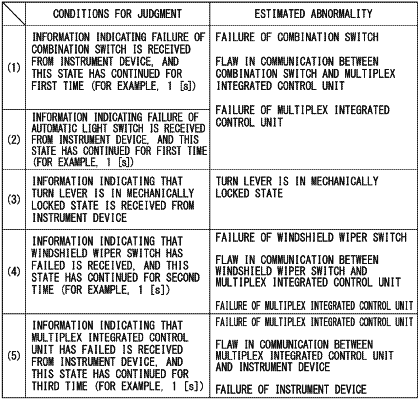| CPC B60W 60/005 (2020.02) [B60Q 1/1484 (2013.01); B60W 30/182 (2013.01); B60W 50/0205 (2013.01); B60W 30/18163 (2013.01)] | 8 Claims |

|
1. A vehicle control device comprising:
a first control device configured to include
a recognizer configured to recognized surrounding circumstances of a vehicle,
a first driving controller configured to controlled one of or both steering and acceleration/deceleration of the vehicle, and
a mode determinator configured to controlled determined any of a plurality of driving modes including a first driving mode and a second driving mode as a driving mode of the vehicle; and
a second control device configured to include a second driving controller configured to controlled executing traveling control of the vehicle by controlling steering and braking of the vehicle,
wherein tasks imposed on a driver in the second driving mode are less significant than the tasks imposed on the driver in the first driving mode and one of or both steering and acceleration/deceleration of the vehicle are controlled by the first driving controller,
wherein the mode determinator changes the driving mode to the first driving mode when the first driving controller controls the vehicle in the second driving mode and when an abnormality occurs in a combination switch, combination switch related equipment which is connected between the first driving controller and the combination switch via a communication line, or communication which is performed by the combination switch and the first driving controller,
wherein the first control device monitors the presence or absence of an abnormality in a second control target that is a target controlled by the second driving controller of the second control device for controlling steering or braking of the vehicle,
wherein the second control device monitors the presence or absence of an abnormality in a first control target that is different from the second control target and is a target controlled by the first driving controller of the first control device for controlling steering or acceleration/deceleration of the vehicle, and
wherein when the second control device judges that an abnormality has occurred in the first control target in a state in which the first driving controller of the first control device controls one of or both the steering and the acceleration/deceleration, in place of the first driving controller of the first control device, the second driving controller of the second control device controls the vehicle and performs automated driving by controlling the second control target different from the first control target.
|